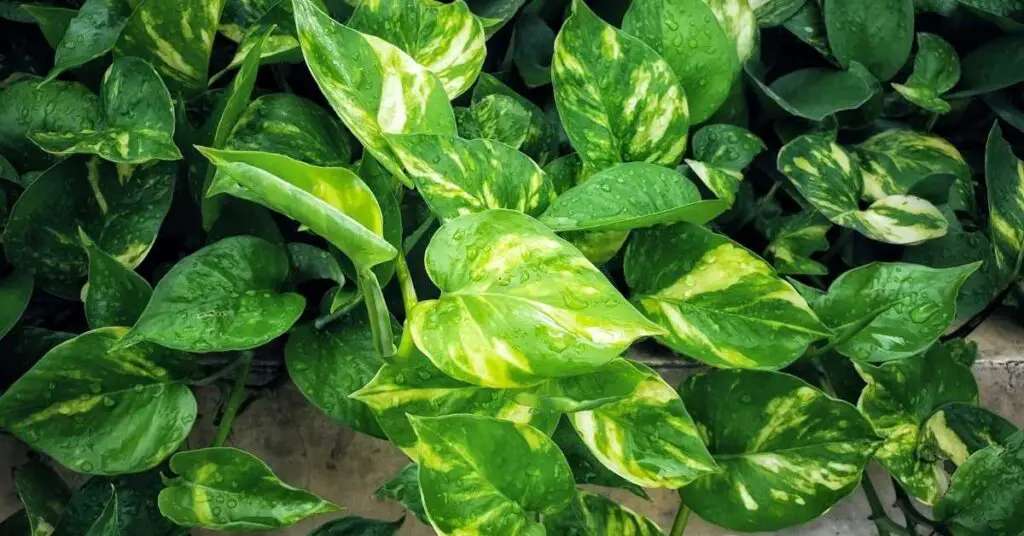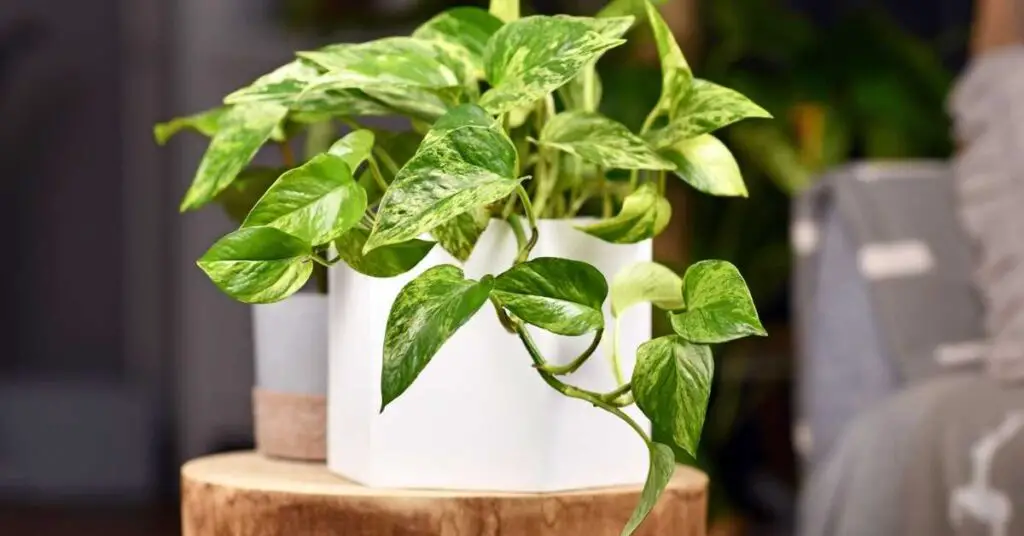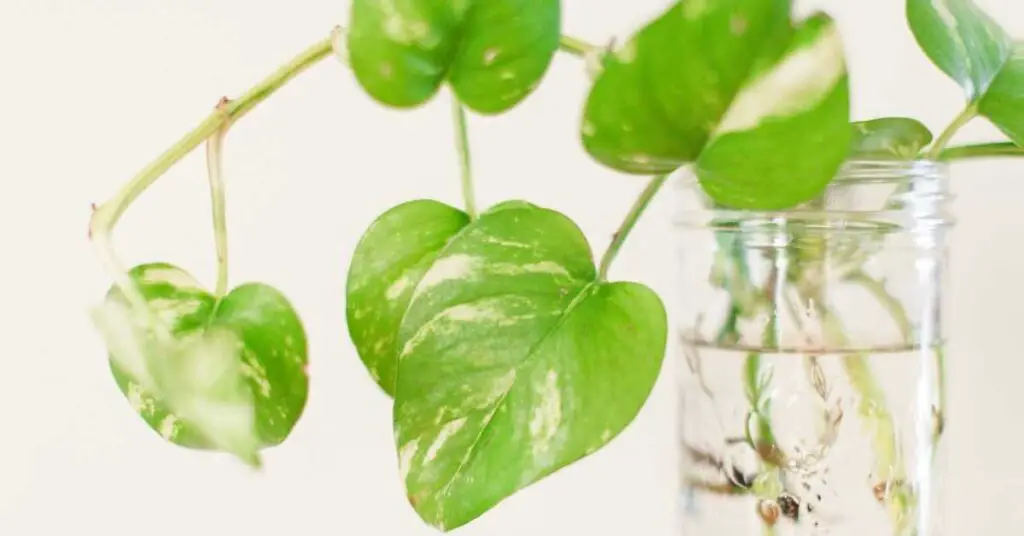Can Neon Pothos have variegation? Yes, Neon Pothos can exhibit variegation in its foliage. Variegation refers to the presence of different colors or patterns on the leaves, often seen as lighter or white streaks or patches on a darker green background. Neon Pothos, known for its vibrant neon-green leaves, can indeed have variegated leaves, with sections featuring lighter green or white, enhancing its aesthetic appeal for plant enthusiasts.
Looking for a vibrant addition to your indoor plant collection? Well, you’re in luck! The neon pothos is a popular choice, but can it have variegation?
In this article, we’ll explore the possibilities of adding some beautiful patterns to your neon pothos leaves. We’ll discuss what variegation is, how to care for variegated neon pothos, and the benefits it brings.
Get ready to discover the wonders of variegation and create a stunning display in your home.
Key Takeaways
- Variegation in neon pothos is a natural occurrence caused by plant genetics.
- Different color patterns in variegated neon pothos can indicate specific care needs.
- Variegation can affect the growth rate of neon pothos plants.
- Variegated neon pothos requires proper care and environmental conditions to thrive.
Can Neon Pothos Have Variegation?
Can neon pothos have variegation
Yes, neon pothos can have variegation. The neon pothos is a cultivar of the pothos plant that has bright, vibrant green leaves with yellow variegation. The variegation in neon pothos is typically more pronounced and distinct than in other varieties of pothos plants.
What Is Variegation?
Variegation occurs when a plant’s leaves have patches or streaks of different colors, giving it a unique and visually appealing appearance. This intriguing phenomenon is caused by plant genetics and can be found in various plant species.
Variegated plant varieties are highly sought after by plant enthusiasts due to their striking leaf patterns. Understanding variegation is essential for proper plant care, as the different color patterns can indicate specific needs.
For example, plants with less chlorophyll in their variegated leaves may require more sunlight to thrive. Additionally, variegation can affect the growth rate of plants, with some variegated varieties growing slower than their non-variegated counterparts.

Types of Variegation
Do you know what’re the different types of variegation that can occur in plants?
Variegation refers to the presence of different colors or patterns on a plant’s leaves or other parts.
There are various types of variegation that can be observed in plants.
One type is natural variegation patterns, which occur due to genetic factors and can result in stripes, spots, or marbling on the leaves.
Another type is cultivated variegation techniques, where humans intentionally create variegated plants through methods such as selective breeding or tissue culture.
Variegation can also be found in other plant species, not just neon pothos.
Genetic factors play a significant role in variegation, as certain genes control the production and distribution of pigments in plant cells.
Variegation is believed to be a plant adaptation that helps in protection from excessive sunlight or other environmental stressors.
How to Care for Variegated Neon Pothos
If you want to care for variegated Neon Pothos, it’s important to provide the right conditions and maintenance. Here are three key tips to help you keep your variegated Neon Pothos thriving:
- Watering frequency: Variegated Neon Pothos prefers slightly moist soil, but be careful not to overwater. Allow the top inch of soil to dry out before watering again.
- Choosing the right potting mix: Use a well-draining potting mix that retains moisture without becoming waterlogged. A mix of peat moss, perlite, and organic matter works well.
- Providing adequate sunlight: Variegated Neon Pothos thrives in bright, indirect light. Place your plant near a window with filtered sunlight or use artificial grow lights.
By following these care tips, you can ensure that your variegated Neon Pothos remains healthy and vibrant.
Remember to avoid over-fertilization and manage humidity levels to create the perfect environment for your plant to flourish.
Benefits of Variegated Neon Pothos
There are several benefits to having a variegated Neon Pothos in your home.
First and foremost, the variegation adds a stunning visual appeal to any space, making it a great addition to your indoor decor. The vibrant green and yellow leaves can brighten up any room and create a lively atmosphere.
In terms of growth, variegated Neon Pothos tend to grow at a moderate pace, which means they won’t take over your living space.
When it comes to lighting requirements, these plants thrive in bright, indirect light, making them suitable for most indoor environments.
In terms of soil conditions, variegated Neon Pothos aren’t very picky and can tolerate a variety of soil types, as long as it’s well-draining.
Lastly, propagation methods for variegated Neon Pothos are relatively easy, allowing you to multiply your plant collection and share the beauty with others.
Common Problems With Variegated Neon Pothos
If you notice any issues with your variegated Neon Pothos, such as yellowing leaves or stunted growth, it’s likely due to improper care or environmental conditions.
Here are some common causes of problems with variegated Neon Pothos and tips for troubleshooting, prevention, treatment, and maintenance:
- Inadequate lighting: Variegated Neon Pothos requires bright, indirect light to maintain its vibrant colors. Ensure that your plant is placed in a location with sufficient light, but avoid direct sunlight as it can scorch the leaves.
- Overwatering: These plants prefer slightly moist soil, but overwatering can lead to root rot and yellowing leaves. Allow the top inch of soil to dry out between waterings and ensure proper drainage.
- Lack of nutrients: Variegated Neon Pothos benefit from regular fertilization to maintain their variegation. Use a balanced, water-soluble fertilizer every month during the growing season.
Propagating Variegated Neon Pothos
To propagate variegated Neon Pothos, you can use stem cuttings from the parent plant. This is one of the most common and effective propagation techniques for this plant. When taking the cuttings, make sure you choose healthy stems with variegated leaves.
It’s important to provide proper lighting for the cuttings, as they require bright, indirect light to grow successfully. Maintaining humidity is also crucial for their growth, so consider placing a plastic bag or a propagating dome over the cuttings to create a humid environment.
When it comes to potting soil choice, a well-draining mix with good moisture retention is recommended.
Lastly, pruning techniques can help promote bushier growth and encourage variegation in the new plants. Regularly remove any leggy or non-variegated stems to maintain the desired appearance.
Tips for Choosing Variegated Neon Pothos
When selecting variegated Neon Pothos, look for plants that have multiple leaves with clear and distinct variegation patterns.
Here are three tips to help you choose the best variegated Neon Pothos for your collection:
- Look for vibrant variegation: Choose plants with leaves that have a strong contrast between the green and white or yellow variegation. The more pronounced the variegation, the more visually striking your plant will be.
- Check for healthy foliage: Inspect the leaves for any signs of damage, such as brown spots or holes. Healthy variegated Neon Pothos should have lush, glossy leaves without any blemishes.
- Consider the growth habit: Variegated Neon Pothos can trail or climb, so choose a plant that fits your desired display. If you want a cascading effect, go for a trailing variety. If you prefer a climbing plant, look for one with longer stems and aerial roots.
Frequently Asked Questions
Can Neon Pothos Have Variegation Without Any Special Care?
Yes, neon pothos can have natural variegation patterns without special care. Environmental factors and genetic mutations contribute to the variegation. To maintain variegation, provide bright, indirect light and avoid overwatering. Contrary to common misconceptions, variegated plants are not more difficult to care for.
What Are the Factors That Can Cause Variegation in Neon Pothos?
To encourage more pronounced variegation in your neon pothos, consider environmental factors like bright, indirect light and balanced watering. Genetic factors also play a role, as certain cultivars have unique variegation patterns. Avoid common mistakes that can cause variegation to disappear, such as over-fertilizing or placing the plant in low-light conditions.
Can the Variegation in Neon Pothos Change Over Time?
Yes, the variegation in neon pothos can change over time. Understanding the genetics behind variegation and properly maintaining the plant can enhance the patterns. Avoid common mistakes to prevent loss of variegation.
Are There Any Specific Pests or Diseases That Commonly Affect Variegated Neon Pothos?
To maintain the common variegation in your neon pothos, it’s important to focus on pest control and disease prevention. Regularly inspect the plant for pests and treat accordingly. Provide optimal growing conditions to enhance and preserve the variegation.
Conclusion
In conclusion, neon pothos can indeed have variegation, which adds a unique and attractive touch to their leaves. Variegation refers to the presence of different colors or patterns on the foliage.
Taking proper care of variegated neon pothos is essential to maintain their vibrant appearance. They require adequate light, water, and well-draining soil. Additionally, propagating variegated neon pothos is possible through stem cuttings.
When selecting variegated neon pothos, it’s important to choose healthy plants with well-defined variegation patterns.



